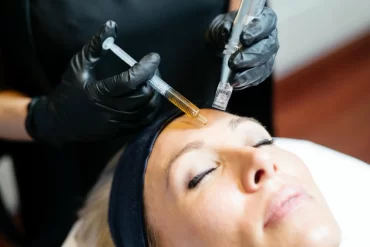Veins and Vessels

Telangiectasia refers to the fine, thread-like blood vessels that may appear close to the surface of the skin. These are often seen on the nose, cheeks and chest, but can occur elsewhere on the body. They may present as red clusters or web-like patterns, and are sometimes called “spider veins.”
Other common vascular changes include cherry angiomas, which look like tiny red dots on the skin. While generally harmless, a doctor’s assessment is always recommended to rule out any underlying concerns.
For many people, these visible vessels are more of a cosmetic concern than a medical one, although some may also experience sensations such as mild itching, warmth or sensitivity in the affected area.
In accordance with Therapeutic Goods Administration (TGA) regulations, we are unable to provide detailed information about specific treatments online. Such information may be misinterpreted as the promotion of prescription-only (Schedule 4) medications – this is not permitted under TGA guidelines.
For this reason, a consultation with one of our practitioners is required. During your comprehensive consultation, your practitioner will carefully assess your skin, discuss your concerns, and provide education around suitable treatment options. A personalised treatment plan will then be created to address your individual needs.
Treatment costs will vary depending on your tailored plan and will be discussed with you in detail during your consultation.
Symptoms include
- Pain (related to pressure on the blood vessels)
- Itch
- Red thread like patterns on the skin
- Blotchy red areas on the skin
- Isolated red dots on the skin (cherry angiomas)
FAQs
What causes visible vessels?
A number of factors may contribute to the development of visible blood vessels, including:
Long-term sun exposure (photo-ageing)
Genetics and family history
Ageing changes in skin and supporting tissues
Hormonal influences (such as pregnancy or medications)
Lifestyle factors (for example, prolonged standing or alcohol use)
Underlying skin sensitivities such as rosacea
Environmental stressors such as extreme cold or heat
How do they manifest?
Fine red lines or clusters on the face or chest
Blotchy redness across the skin
Small isolated red dots (cherry angiomas)
Gradual development or worsening with age
What are our recommended treatments?
At Youth Lab, our practitioners can provide advice and discuss treatment options that may help improve the appearance of superficial redness and visible vessels. In some cases, referral to a specialist (such as a dermatologist or vascular doctor) may be recommended for further assessment.
Possible in-clinic options include:
Broadband Light (BBL) treatments – which use light energy to target redness and visible superficial vessels in suitable candidates.
Lesion removal techniques – appropriate for small, isolated spots such as cherry angiomas.
Adjunctive skin therapies – to help improve skin tone, texture and resilience over time.
Your practitioner will recommend a personalised plan after consultation, as results depend on the type of vascular concern and individual factors.
Please note: Youth Lab focuses on cosmetic improvement of superficial redness and vessels only. If deeper or symptomatic veins are suspected (such as varicose veins), referral to an appropriate medical specialist will be made. A consultation is always required to confirm suitability and to create a safe, tailored treatment plan.


